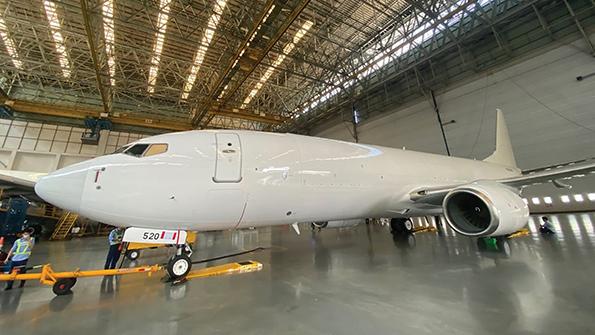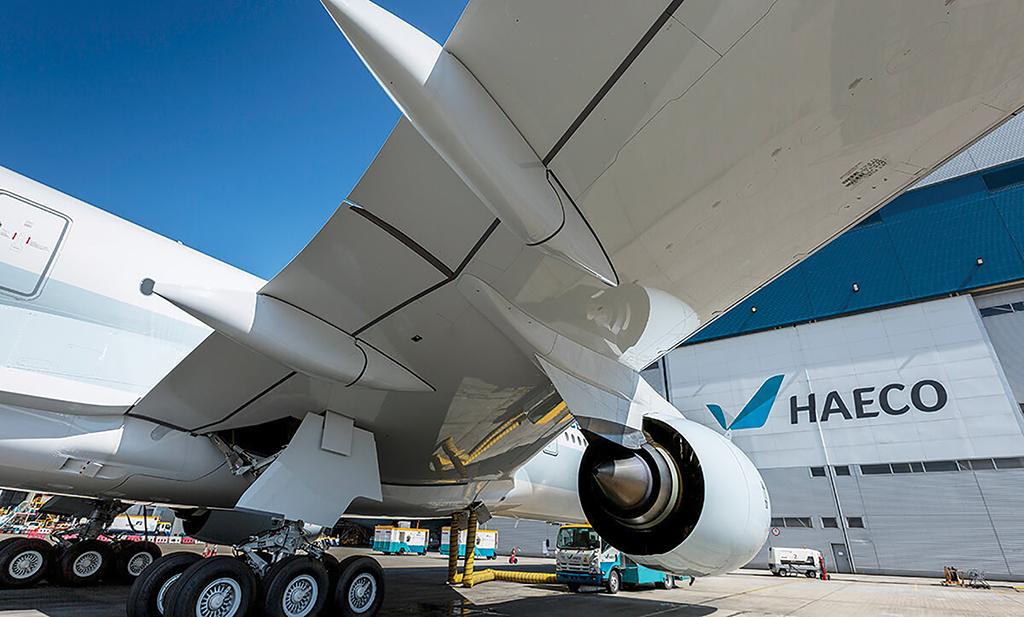
Asia’s MRO industry is expected to face a temporary capacity crunch when airlines ramp up their fleets after the pandemic, although the longer-term capacity outlook is brighter as MRO providers keep expansion plans largely on track.
Major MRO companies in this region have seen a significant dip in business due to airlines parking large numbers of aircraft and deferring heavy maintenance. But demand could spike quickly when COVID-19 restrictions ease, with many Asia-Pacific airlines needing MRO providers to help reactivate aircraft that have been in storage for several months.
There is no capacity shortage now because much scheduled maintenance has been pushed back, Romulo Raras, head of engineering for Philippine Airlines, said during Aviation Week’s MRO Asia-Pacific virtual event Sept. 24. “But the question will be whether there is enough capacity as we exit the pandemic to cater for all the aircraft coming out of storage, considering some MROs might have reduced their [workforce] to survive.
“I think we should be preparing for that already,” he continued. “We have to urge the MROs to start preparing. . . . [Airlines] should probably be planning it with them ahead of time, so as we exit the pandemic we’re ready to open up travel again.”
Those on the providers’ side expressed similar views. When governments remove cross-border restrictions, “most airlines would want to immediately jump back in and crank up [services] again,” HAECO Group CEO Frank Walschot said. “There is a fairly high chance that for a short period of time there will not be sufficient [MRO] capacity simply because there will not be enough parking spaces in and around hangars” to handle the demand. However, Walschot stresses that this “will only be a relatively short-term issue and will not drag on very long.”
Gameco CEO Norbert Marx said “there will be a surge [in demand] to a certain extent” after the pandemic, which could cause a shortage in maintenance slots. But he noted it will be temporary in nature and could differ by region, aircraft type and airline customer.
“The airlines and leasing companies will have to plan very well, and if they have reduced their [workforces], that could also add to the problem,” Marx said. “So there will be some difficulties, but it will not be a systemic issue for the MRO industry.”
The resurgence of COVID-19 due to the COVID-19 delta variant means it is unlikely there will be a spike in MRO demand in the near term, said Foo Kean Shuh, SIA Engineering Co. (SIAEC) senior vice president for corporate planning, fleet management and commercial. “But I have to say, it would be a welcome problem if demand does come back—I think it’s something we can [cope] with.”

Another potential problem could occur during the recovery phase if the supply chain for parts cannot ramp back up quickly enough. This is already happening to some extent where companies in the supply chain have cut resources, Walschot said. “Certainly on the engine side we are starting to see some stresses in the [supply chain] system, and I would not be surprised if we see that across multiple areas of MRO business in the near term.”
However, the fact that a lot more aircraft are being retired or scrapped during the pandemic will mean an increase in used parts for some types, said Tan Eng Shu, head of MRO and commercial aerospace for ST Engineering. This will help relieve some of the pressure on the supply chains for new parts.
MRO providers across the Asia-Pacific region have seen their business decline to different degrees. International line maintenance has been hit particularly hard, as has widebody heavy maintenance. Markets where domestic networks have rebounded, such as China, are in a stronger position.
The decline in heavy maintenance for passenger aircraft has to some extent been offset by an increase in freighter conversions, as demand for air cargo has increased dramatically. There has also been a rise in the number of lease returns, which often require pre-return maintenance visits.
Most of the region’s major MRO organizations have seen workload and revenues start to rebound, although full demand recovery is expected to take years. However, these companies are generally still pushing ahead with facility expansion that was planned before the pandemic.
Gameco remains on course to finish a massive hangar construction project in Guangzhou by the end of this year, Marx said. “We could have stopped it [due to COVID-19], but we didn’t do that.”
In addition, Gameco has continued work on new facilities for its component business and composite repairs. These are expected to be ready in the first half of 2022. “We slowed down hiring a bit, but we didn’t slow down with strategic projects,” Marx said.
SIAEC is also not deviating from its development plans, Foo said. This year SIAEC has opened a new facility for engine services, and it is in discussions to expand its component services operation.
Business has been “patchy” since early 2020, Foo said. “But on the whole, we’re looking to expand because we believe that this is a near-term blip, and we’re looking [at] and planning for the future.”
HAECO, meanwhile, has slowed some of its facility development, although in certain cases this has been because of external factors, Walschot said. For example, one of the group’s major initiatives is moving its Xiamen, China, operation to a bigger facility located at a new airport, but HAECO’s plans have been set back by delays to the airport project.
The HAECO group views the current crisis as temporary, “therefore we will continue to expand, and we strongly believe MRO in Asia will be a growth business going forward,” Walschot said.
ST Engineering was planning for capacity expansion before the pandemic, particularly for airframe maintenance, Tan said. The group’s projects in Asia, Australia and the U.S. are going ahead, as the company is expecting passenger aircraft demand to rebound after the current crisis, he said. ST Engineering expects airframe work will have almost fully recovered by the end of 2023.
But even if adequate facility growth occurs, the future chokepoint for the MRO industry could be workforce-related. In cases where employees were furloughed or had their hours cut, it may be hard to attract them back—let alone find additional staff for expansion.
There is likely to be enough global hangar capacity to meet industry needs in the long term, even if it is not always in the right location, Walschot said. “Our bigger concern is not really hangar space; it’s manpower,” he said. “The pandemic gave us a little bit of a reprieve, but skilled labor is in short supply.”
Tan echoed the workforce warning. “Before the pandemic, all of us were struggling to find more manpower, and last year was kind of a respite with work not coming in,” he said. “Going forward after the recovery, the aerospace worker [shortage] situation might be even greater.”
“Looking around the region, there is sufficient hangar space, but workforce will be a challenge,” Foo said. “During the [pandemic] period, many people have lost confidence in the [aviation] industry and gone to other parts of the workforce. . . . When demand comes back, it will be difficult to find staff.”



